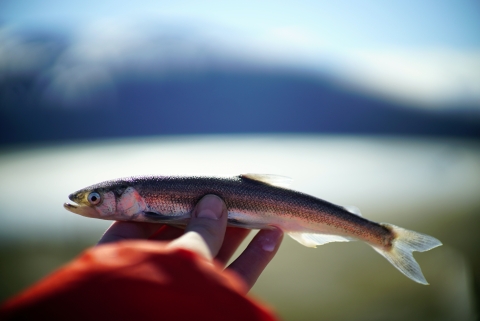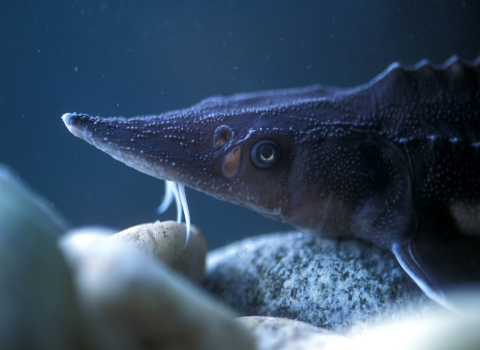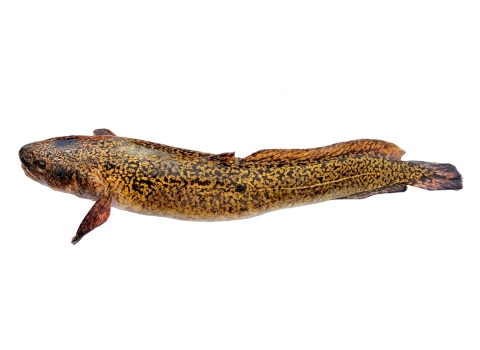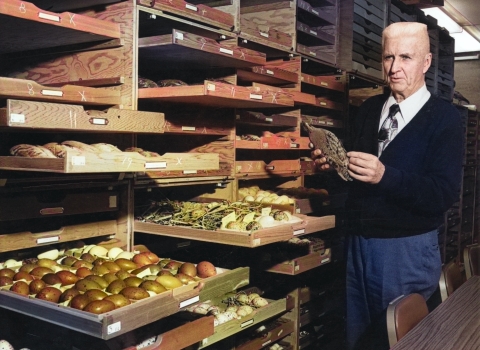Adapted from a conversation with guests Ted Hart from the Chilkoot lndian Association and Meredith Pochardt from Haines, Alaska.
What’s in a name?
The American Fisheries Society has settled on Eulachon, but there are others:
The local name I hear a lot is ooligan. It’s like o-o-l-i-g-a-n. And oolichon. Many people say hooligan, and the traditional name for them is saak, s-a-a-k. That’s the Tlingit name.
Candlefish. Once dried, they’re so oily, you can literally light them on fire.
Salvation fish.
Harbingers of spring and fresh hope
Their timing is really important in springtime. You can picture if you’re surviving off the land, thousands of years ago, pretty much all your winter food would be depleted by spring. And then all of a sudden you get this huge wave of nutrient-rich fish. One spoonful, it’s enough for an elder for the day. That’s how many nutrients are in it.
Wildlife too. There’s huge kind of fanfare — all the seabirds, the seals, the sea lions. They follow this migration of hooligan. This fish’s spawning migration is dubbed the “grease wave” — the marine mammals follow it as the spawning progresses northward. And for sea lions, this huge nutrient-rich, potent meal is really key timing for them, because then they’ll go and give birth to their pups. And the females won’t eat while they’re lactating. Hooligan provide their last big source of energy right before they give birth. It’s a really key timing window.
A long time ago, people would start to gather again this time of year. And where they would gather would center around catching hooligans. It was said that people needed to put their old squabbles and hard feelings aside that time of year.
It gets really windy on the Chilkat River when the hooligans come. There are big gusts of silt that blow around. And there’s a story of all the people — they gathered around, and they tied their blankets together. And they all worked with each other to shelter each other.
Bringing people together
These tiny fish have a huge presence. One of their most valuable offerings is the hooligan oil. They can be rendered down in great numbers. You boil them in old canoes, and then you can just skim all of that oil, just right off the top of the water. You can get huge amounts of oil. Because of that oil, there were huge trade networks that ran from the coast all the way into the interior. It was basically a currency a long time ago.
Gold didn’t have a whole lot of uses around here. I heard people using it for the tips of bullets. That hooligan oil— it’s truly liquid gold.
Hooligan oil was traded between coastal and inland First Nations all along the Pacific coast, from California to Alaska. These routes, inspired by the oil from these fish, were known as grease trails.
There are stories of when there was a big potlatch, with a lot of visitors coming, that people with a lot of wealth would pour hooligan oil on their fires. There’d be all this black smoke coming out of their houses. That was a sign of wealth.
How do you catch them?
Mostly with dip nets. You put your net out there and then just use the the current of the river to dip down. And you’re supposed to go “p-o-o-o-o-o-o-”. And that’s a sign of respect for the hooligans. They’re said to be a happy fish. You show your respect, and that you’re happy they’re there.
Most of the time, you can’t even see that they’re in there. You can just kind of go by all the clues—the birds being one of them.
There’s obviously like a ton of excitement when they first show up, and everyone wants to get down to the river and fish. It’s really good to give them a day or so when they first start going up—the scouts go up first. If you let them get established, you’re guaranteed a nice, big long run. It’s easy to get excited. There’s fish everywhere, they’re easy to catch. And it’s just good to take step back when they’re first showing up. Let them get established really well.
They get a bluish tint to certain different rivers, they’ll kind of have a different hue to them. Here, we’re pretty fortunate we get two runs. One of our elders—Auntie Sally, she could look at a hooligan from either the Chilkat or Chilkoot River side. And she can distinguish just by looking at them.
How are they eaten?
They have their own unique flavor. You definitely can taste that they have a super high oil content.
You can dust them in flour and put them in a really hot oven, and turn them once they get super crispy.
My cousins used to call them “crispy fish.”
They have a very high quality oil, it’s like olive oil. I really like the texture of it. It’s a little bit of an acquired taste. There are different grades. The old timers used to make it really strong. They say the stronger it is, the more medicines are in there—the more potent it is. Some of my friends make it and it’s just really light and mild in flavor.
Basically, you gather enough hooligan to fill a great big pit. It’s like eight by 10 feet. You line it with grass and organic material and fill it with many, many gallons of hooligan. And then you let them let them ripen for, say, 4 to 10 days. They say once their eyes turn a little red, then they’re ready.
Then you transfer them into a giant boiling pot and cook them. It takes a long time. You kind of break them, using an old paddle — stir it up, and they break apart. And then you start pouring cold water in there on top. All of these bubbles of oil just start coming to the surface. In one cook, you can get five gallons of oil. The more you ripen it, the more oil you get.
New episodes of Fish of the Week! every Monday!
In Alaska we are shared stewards of world renowned natural resources and our nation’s last true wild places. Our hope is that each generation has the opportunity to live with, live from, discover and enjoy the wildness of this awe-inspiring land and the people who love and depend on it. We honor, thank, and celebrate the whole community — individuals, Tribes, States, sister agencies, fish enthusiasts, scientists, and others — who have elevated our understanding and love, as people and professionals, of all the fish.
Follow us: FacebookTwitterApple Podcasts







